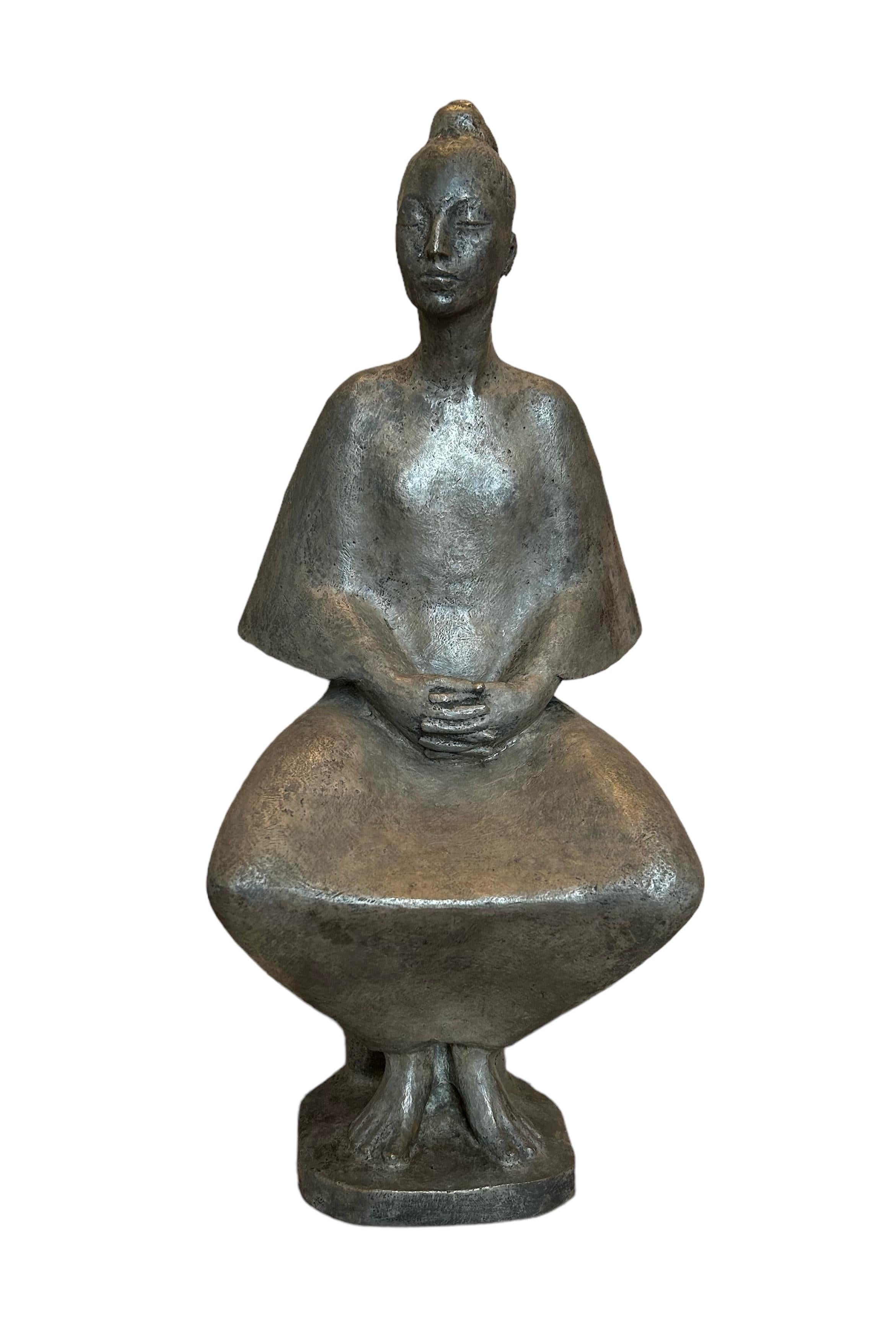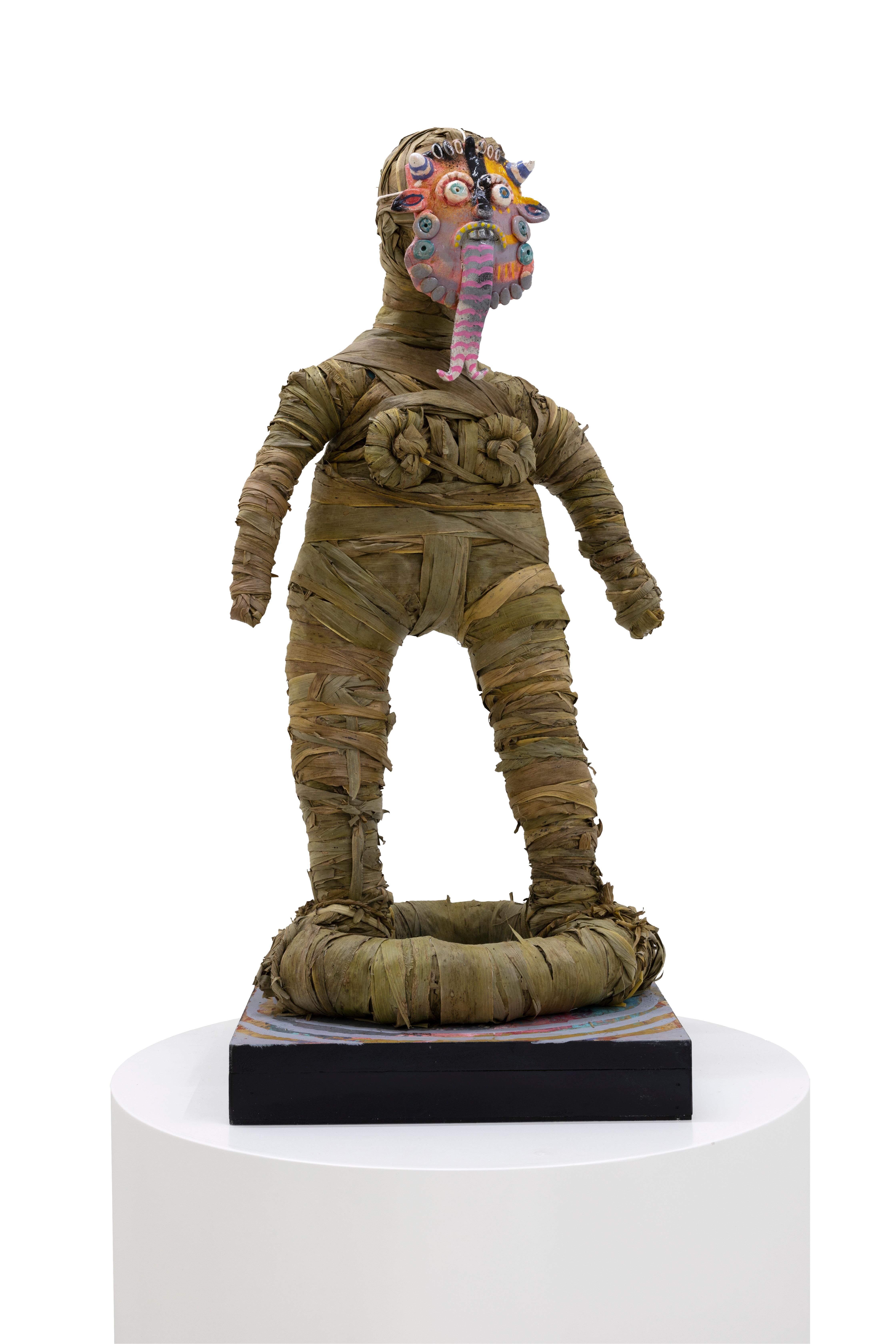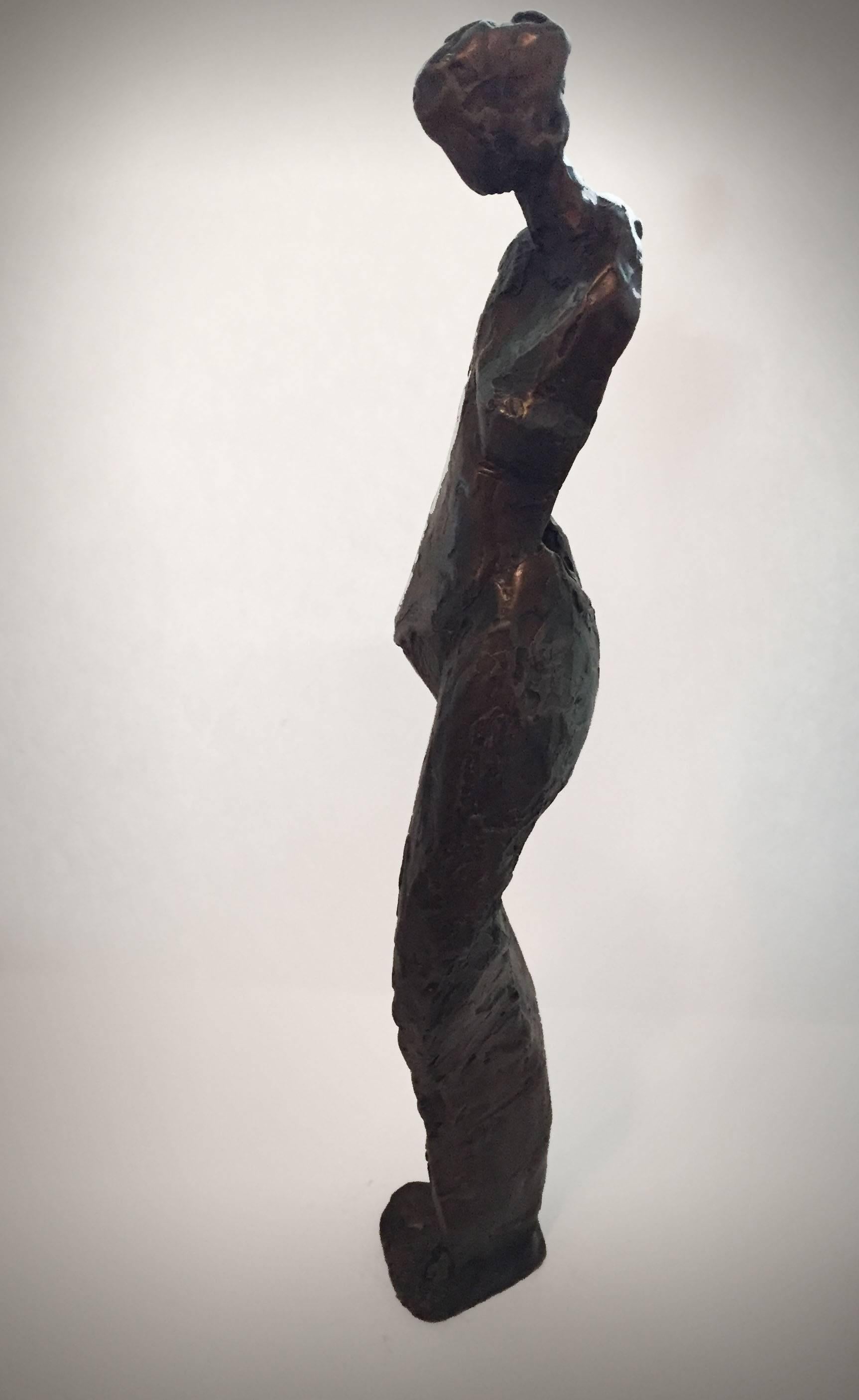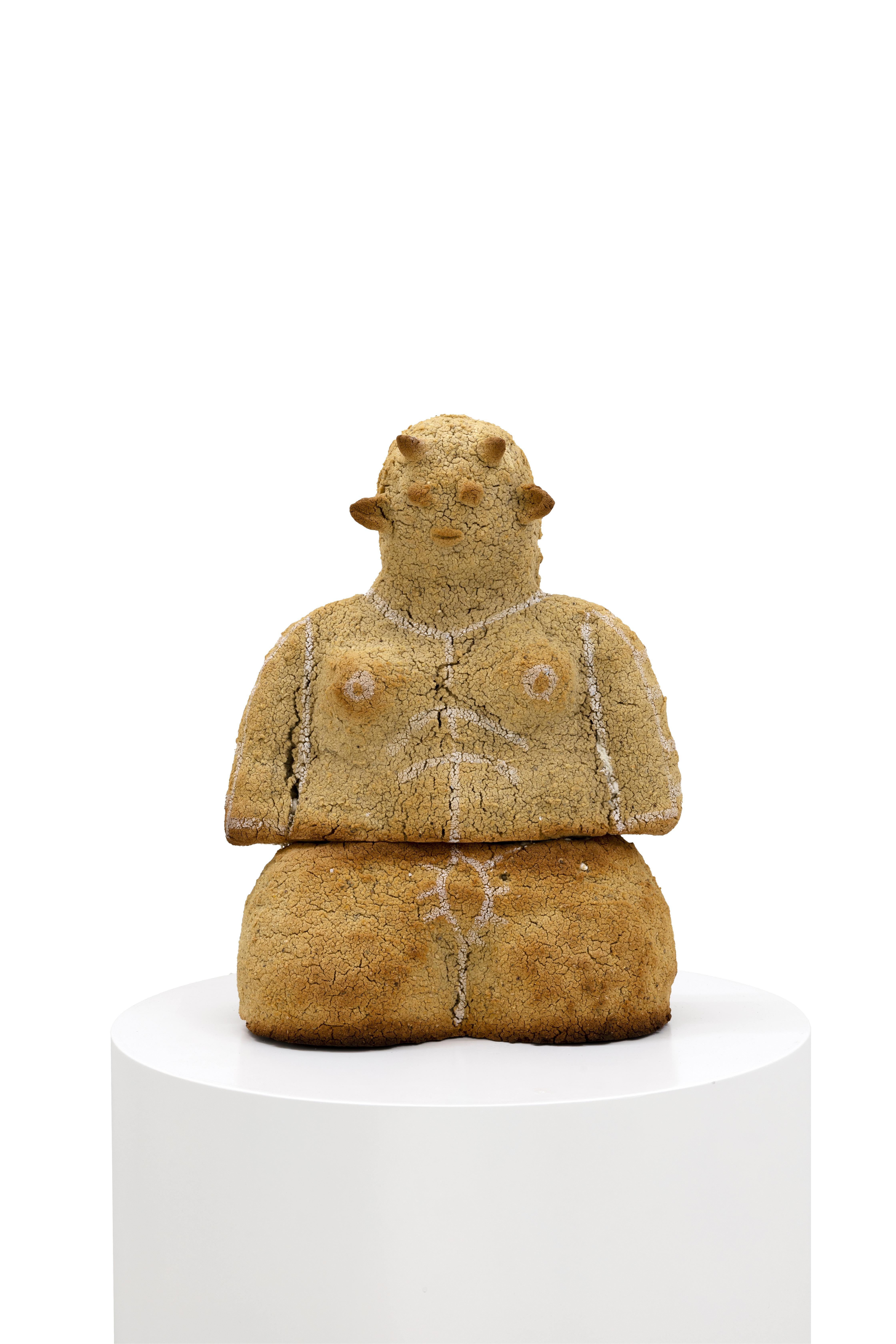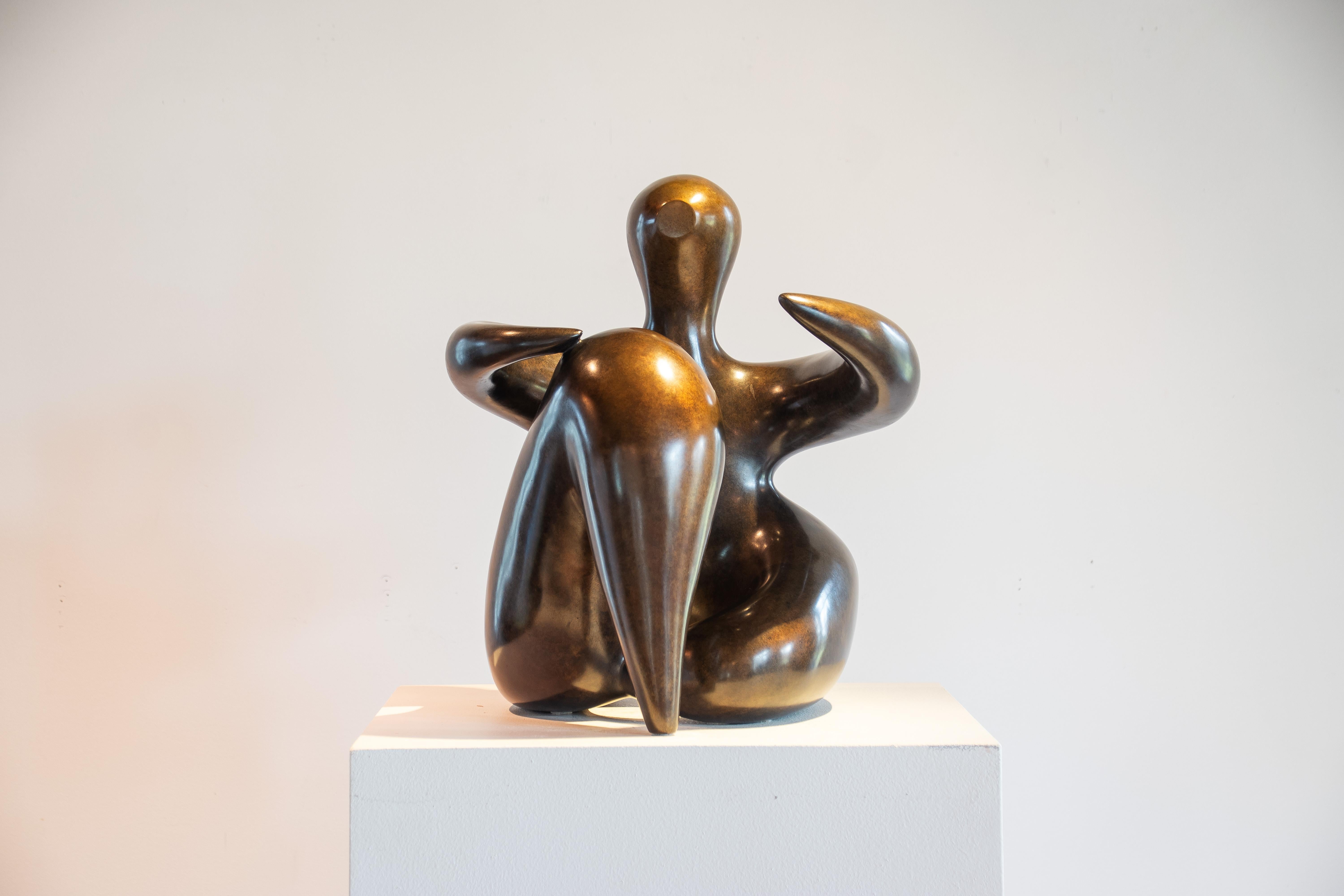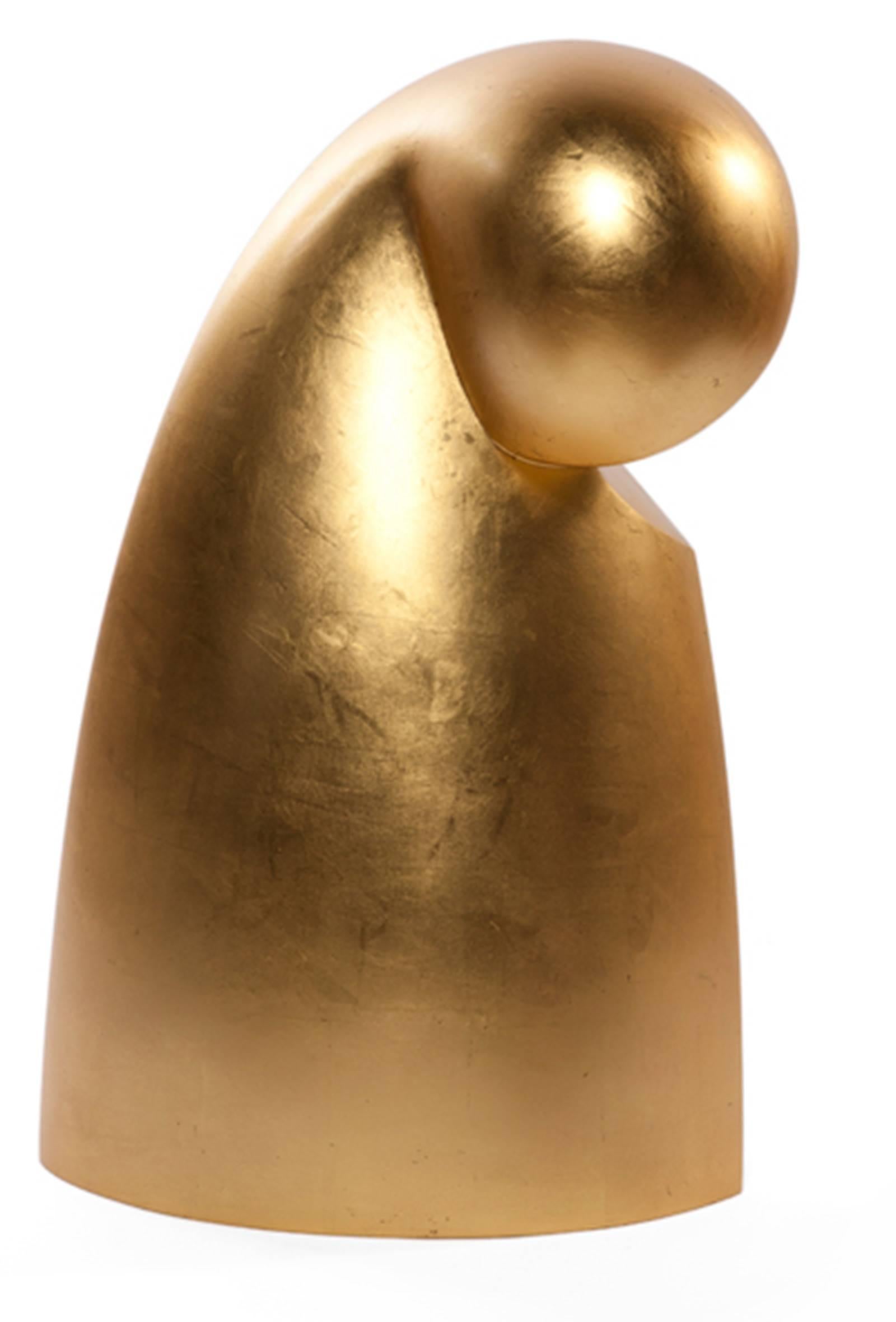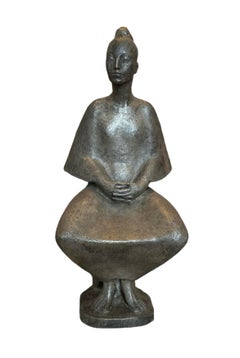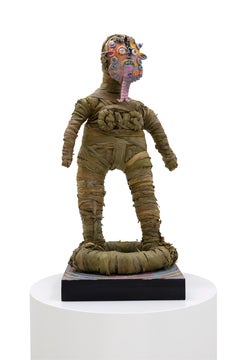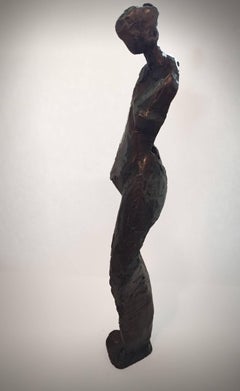Items Similar to Ixchel
Want more images or videos?
Request additional images or videos from the seller
1 of 10
Enrique Gottdiener SotoIxchel1977
1977
$1,750
£1,328.82
€1,519.60
CA$2,445
A$2,719.38
CHF 1,419.97
MX$33,091.94
NOK 18,135.24
SEK 17,007.66
DKK 11,341.36
Shipping
Retrieving quote...The 1stDibs Promise:
Authenticity Guarantee,
Money-Back Guarantee,
24-Hour Cancellation
About the Item
This artwork titled "Ixchel" 1977, is a bronze sculpture with brown patina by noted Mexican artist Enrique Gottdiener Soto, 1909-1986. Signature is impressed on the bronze. The sculpture size is 15.35 x 5 inches, with the wood base is 20.25 x 5.35 inches. It is in excellent condition, the wood base have some minor restorations, practically invisible.
About the artist:
Gottdiener Soto, Enrique (1909-1986) Sculptor. He was born and died in Mexico City. His parents were Marcos Gottdiener, of Austro-Hungarian origin, and Esther Soto, a Mexican. When he was a child, his grandfather took him to Austria, where he began his studies in the art of miniatures with a Viennese goldsmith named Kurt Beckman. During this time he studied violin, a discipline that he could not continue practicing because he lost the last phalanx of his middle finger at a baptism party for which he was hired to play and which ended in a violent manner. Later, he was a student of Luidwig Weiss, a wax sculptor, but when he left Austria he was apprenticed to Feltheim, whom he could not stand because of his bad temper. He moved to Budapest, Hungary, where he entered the Munkasci School of Art; later he worked with the cabinetmaker Gustav Herbert. When he felt that he had some mastery in woodworking, he decided to go to Transylvania, today Romania, and in Oradea he worked in the workshop of the Engelstein brothers. Later he visited Odessa, Kiev and Beirut, where he fought alongside Lebanese students against French colonialism. From Beirut he went to Vienna, from there to Prague, returned to Vienna and left for Berlin, where he entered the Molzschnitzerschule or woodcarving school. Then he went to Holland, from there to France, Belgium and Spain. In Santander, to earn a living, he specialized in carving figures of Saint Francis and Saint Anthony. In Vigo, taking advantage of the fact that Galicians were recruiting to go to Cuba to cut sugarcane, he signed up and embarked for the island. After spending two months in Cuba, he decided to embark for Veracruz. In Mexico he studied at the San Carlos School and then at the Coyoacán Open Air Painting School, where he received the teachings of Ramón Martínez. In Mexico he learned to carve, gilding and the restoration of antiques. He was an assistant to Carlos Bracho and a friend of Francisco Montoya de la Cruz and Rodolfo González, prominent native artists from Durango.
For a time he lived in Guadalajara, where he began to work with the master Pablo Valdez. There he devoted himself to making miniatures in ivory and worked at the State Museum. In Guadalajara he met Jesús Guerrero Galván and Raúl Anguiano. Later he settled in Guanajuato, where he taught fine arts and history at the State College. He did not stay long in Bajío because, influenced by the Vasconcelos spirit of the time, he decided to join the cultural missions project. Thanks to this he was able to travel around the country, and get to know the people and landscapes of rural Mexico. He spent 10 years dedicated to these tasks, several of them in the Sierra de Oaxaca. During these wanderings he was able to get to know the Southeast where he had the opportunity to make sketches of the men and women of Yucatán. These were the inspiration and basis for his later sculptural works. After working in the cultural missions he decided to stay and live in Yucatán. Settled in Mérida, he devoted himself for many years to the creation of antique-style furniture and art objects emulating European ones. He also sculpted classical busts and beautiful miniatures. He was an antique dealer and came to possess a notable collection of art objects.
In 1973 he presented his first exhibition of Yucatecan sculptures, with 20 works in lost-wax bronze, which demonstrated the maturity reached by the artist. In his indigenous heads, in his small peasant figures, the influence of Mayan art can already be perceived. For more than 30 years he was a history teacher at the Federal School Number 1, in Mérida, and during the period of Governor Luis Torres Mesías (1964-1970) he held the position of head of the General Directorate of Fine Arts, after having taught at the School of Plastic Arts for more than 30 years. In 1972 he was awarded the Yucatán Medal, and in 1979, the Eligio Ancona Medal. As a miniaturist he created works in ivory, hardwoods and metals. He participated in countless exhibitions in Yucatán, Campeche and other parts of the country and abroad. Various of his works can be found in Belgium, Israel, Iran, France, England, Hungary, Romania, Italy and the United States of America.
It was during his most mature period that he began to produce works of a distinctly Yucatecan character, in which he managed to capture the daily life and tragedy of the Mayan people. Among his copious production are: Ixchel , Mayan goddess of fertility; Mestiza , One more son , Mayan Indian with machete , Sitting mother and Mother with child , The weeder , Walking mestiza , Particular express , Goyita , Doña Zenaida , Naked old woman , Sitting wizard and The sorcerer, which is perhaps his most finished work and the one for which he is always remembered. He also made busts of his contemporaries who stood out in art and literature: Ermilo Abreu Gómez, Armando García Franchi, Leopoldo Peniche Vallado, Antonio Mediz Bolio, Eduardo Urzaiz Rodríguez, Guty Cárdenas. The one of Mediz Bolio is considered a masterpiece of characterization. He was not prodigal in statuary; However, he left behind, among others, a bronze high relief of Manuel Antonio Ay, in Chichimilá, Yucatán; Indigenous Mother with Child , in Tixpéhual, Yucatán; the monument to Friar Diego de Landa, in Izamal , Yucatán; the bust of Jacinto Canek and that of Alfredo Barrera Vásquez, in Mérida. He also collaborated in the realization of the Monument to the Child Heroes, in the park of La Mejorada. Gottdiener, referring to his sculptural work, said: "I try to rescue the cultural values of a race, of an ethnic group. Of this wonderful people that is the Maya. Good, peaceful, humane people; people of exquisite and delicate artists, whose cultural manifestations are never an invitation to kill. We must revive the values of this race. This humanism deserves our support. With my sculptures I intend to move people so that they realize the value that respect for man contains." As a tribute to his work, on December 13, 1981, the state government established the Gottdiener Room at the Juan Gamboa Guzmán Art Gallery in Mérida, which exhibits 37 of his bronzes.
- Creator:Enrique Gottdiener Soto (1909 - 1986, Mexican)
- Creation Year:1977
- Dimensions:Height: 20.25 in (51.44 cm)Width: 5.35 in (13.59 cm)Depth: 5.35 in (13.59 cm)
- Medium:
- Period:
- Condition:
- Gallery Location:San Francisco, CA
- Reference Number:Seller: got/sot/ixc1stDibs: LU666315757832
About the Seller
5.0
Platinum Seller
Premium sellers with a 4.7+ rating and 24-hour response times
Established in 1999
1stDibs seller since 2017
811 sales on 1stDibs
Typical response time: 2 hours
- ShippingRetrieving quote...Shipping from: San Francisco, CA
- Return Policy
Authenticity Guarantee
In the unlikely event there’s an issue with an item’s authenticity, contact us within 1 year for a full refund. DetailsMoney-Back Guarantee
If your item is not as described, is damaged in transit, or does not arrive, contact us within 7 days for a full refund. Details24-Hour Cancellation
You have a 24-hour grace period in which to reconsider your purchase, with no questions asked.Vetted Professional Sellers
Our world-class sellers must adhere to strict standards for service and quality, maintaining the integrity of our listings.Price-Match Guarantee
If you find that a seller listed the same item for a lower price elsewhere, we’ll match it.Trusted Global Delivery
Our best-in-class carrier network provides specialized shipping options worldwide, including custom delivery.More From This Seller
View AllLady with Bird
Located in San Francisco, CA
This artwork "Woman with Bird" c.2000 is an original cast paper bas relief by noted Swedish/American artist Carlo Wahlbeck, b. 1933. It is hand signed a...
Category
Early 2000s American Modern Figurative Sculptures
Materials
Other Medium
Uncle Charlie's
By Enrique Kico Govantes
Located in San Francisco, CA
Artist: Enrique Kico Govantes (Cuban, born 1957)
Title: Uncle Charlie's
Year: Circa 1980
Medium: Mixed media and collage
Paper Sketch
Image size: 9.5 x 13 inches
Signatu...
Category
Late 20th Century Modern Mixed Media
Materials
Mixed Media
The Key to the Virgin Mary
Located in San Francisco, CA
This artwork titled "The Key to the Virgin Mary" 1975, is an original colors woodcut on thin paper by noted Austrian artist Bernd Kroeber, b.1942. It is hans signed, titled, dated an...
Category
Late 20th Century Surrealist Figurative Prints
Materials
Woodcut
Arabesque, Ballet Dancer
Located in San Francisco, CA
This sculpture titled "Arabesque (Ballet Dancer)" 2001 is a cast bronze sculpture with silver patina by noted contemporary American artist Rebecca Clark. Signature, date and numbering /500 are impressed in the bronze on the deck. The sculpture size without the marble base is 28.25 x 17.75 x 13 inches, with the marble base is 29.5 x 17.75 x 13 inches. It is in mint condition.
About the artist:
Rebecca A. Clark is a Fine Artist and Creative Director with over 20 years of professional experience working in the fine art field in New York City. Her masterful artworks are collected by prominent art collectors worldwide. Rebecca specializes in figurative bronze sculptures, oil paintings, drawings and monumental works of art that embody dynamic strength and classic iconic beauty.
Her artworks range from sensuous figurative sculptures to magnificent heroic size monuments. Commissioned works include “Battling Stallions”, her 18 ft. tall monumental bronze sculpture at the luxury gated development “Le Chevalier” in Barrington Heights, West Linn, Oregon, as well as her elegant 9 ft. tall ballerina bronze sculpture titled “Arabesque” on public display at the Oregon Ballet Theatre. Exclusive custom created works of art portray diverse concepts and themes for private and corporate collectors. Signature series include: Heroic series (Honoring American military Heroes), Inspirational, Classic Nudes and Romantic among other series and sculpture projects in development.
Rebecca was born an artist and has always had the desire to achieve excellence in all of her endeavors. From a very early age she was immersed in imaginative creative works such as building models of futuristic cities, paintings, sculptures and a multitude of drawings. In 1981, at the age of 17, Rebecca moved from Lake Oswego, Oregon to New York City to pursue a career in fine art and design at the Parsons School of Design. Shortly after she arrived, Rebecca began her professional artistic career assisting the renowned illustrator Antonio Lopez. At age 18, Rebecca was hired by the famed designer Halston, and began working directly with him as a fashion designer and illustrator. Subsequently, she was discovered by the Ford Models agency and traveled around the world as a top international fashion model. Rebecca worked with renowned fashion photographers such as Richard Avedon, Bruce Weber, Steven Meisel, Patrick Demarchelier and others. Rebecca is experienced in working with the major media, including international publications such as Vogue, Harpers Bazaar, Elle, The New York Times and Glamour, among others, as well as in television. She was featured in a national Diet Slice-Style television commercial that was shown during halftime at the 1987 Super Bowl. Rebecca also appeared in top fashion shows in New York City and Paris, France and in international advertising campaigns such as Revlon’s “The Most Unforgettable Women In The World” ads photographed by Richard Avedon.
In 1991, Rebecca left a prestigious modeling career to return to her true creative passion. She began creating a series of beautiful and universally appealing fine bronze sculptures and many commissioned works. In 1998, she began oil painting and studied at the New York Academy of Art, while creating oil paintings depicting the classic nude, equine, inspirational themes and portrait commissions for select art collectors. In 2001, Rebecca developed several digital film projects through her studies in the Film Directors Program at New York University. From 2001 to the present, she continues to create bronze sculptures, drawings, and oil paintings for private art collectors.
In 2011, Rebecca was officially endorsed and directed by the National Special Forces Association to create The National Special Forces Green Beret...
Category
21st Century and Contemporary American Realist Figurative Sculptures
Materials
Bronze
Torso de Mujer
By Rufino Tamayo
Located in San Francisco, CA
This artwork titled "Torso de Mujer (Torso de Femmee)" from the suite "The Mujeres File" 1969 is an original colors lithograph on Wove paper by renown Mexican artist Rufino Tamayo, 1899-1991. It is hand signed and inscribed H.C. (Hors Commerce) in pencil by the artist. The image size is 26.85 x 21 inches, framed size is 40.75 x 33 inches. Published by Touchtone Publisher, New York, printed by Ateliers Desjobert, Paris. Referenced and pictured in the artist's catalogue raisonne by Pereda, plate #108 page 107. Custom framed in a wooden gold frame, with gold bevel and light beige fabric matting. It is in excellent condition.
About the artist:
A native of Oaxaca in Southern Mexico, Rufino Tamayo's father was a shoemaker, and his mother a seamstress. Some accounts state that he was descended from Zapotec Indians, but he was actually 'mestizo' - of mixed indigenous/European ancestry. (Santa Barbara Museum of Art). He began painting at age 11. Orphaned at the age of 12, Tamayo moved to Mexico City, where he was raised by his maternal aunt who owned a wholesale fruit business.
In 1917, he entered the San Carlos Academy of Fine Arts, but left soon after to pursue independent study. Four years later, Tamayo was appointed the head designer of the department of ethnographic drawings at the National Museum of Archaeology in Mexico City. There he was surrounded by pre-Colombian objects, an aesthetic inspiration that would play a pivotal role in his life. In his own work, Tamayo integrated the forms and tones of pre-Columbian ceramics...
Category
Mid-20th Century Modern Figurative Prints
Materials
Lithograph
Dos Mujeres Mayas (Two Mayan Women)
By Francisco Zúñiga
Located in San Francisco, CA
This artwork titled "Dos Mujeres Mayas (Two Mayan Women)") 1983 is an original Mixograph cast paper bas relief by Costa Rican/Mexican artist Francisco...
Category
Late 20th Century Realist Figurative Sculptures
Materials
Other Medium
You May Also Like
Woman in Huipil
Located in New Orleans, LA
Artist Enrique Alférez was born in Zacatecas, Mexico and lived nearly the entire 20th century. After service in the Mexican Revolution as a youth, he emigrated to Texas, studied in C...
Category
1980s Art Deco Nude Sculptures
Materials
Bronze
Price Upon Request
"Nana Tsiri", mexican, sculpture, contemporary, figurative
By Jose Angel Pahuamba
Located in Ciudad de México, MX
Mexican, sculpture, contemporary, figurative
Category
2010s Figurative Sculptures
Materials
Metal
Unknown Israeli Bronze
Located in Surfside, FL
Bronze figurative sculpture
Unknown Israeli Artist
Category
20th Century Figurative Sculptures
Materials
Bronze
"Diablita de contamal", mexican, sculpture, contemporary, figurative
By Jose Angel Pahuamba
Located in Ciudad de México, MX
Mexican, sculpture, contemporary, figurative
Category
2010s Figurative Sculptures
Materials
Mixed Media
Maria Martinez
By Cornelia Kubler Kavanagh
Located in Fairfield, CT
Cast bronze
Category
2010s Contemporary Figurative Sculptures
Materials
Bronze
Price Upon Request
Joel Urruty - Sierra
By Joel Urruty
Located in Greenwich, CT
"As an artist I strive to create elegant sculptures that capture the true essence of the subject matter. Form, line and surface are used as the visual language. The figure is abstrac...
Category
21st Century and Contemporary Contemporary Abstract Sculptures
Materials
Gold Leaf
Price Upon Request
More Ways To Browse
Bronze Nude 20th Century
Bronze Nude Woman
Miniatures On Ivory
Wax Relief
Carved Nude Wood
Bronze And Ivory Sculpture
Indian Goddess
Small Indian Sculptures
Viennese Bronze Sculptures
Carved Ivory Sculpture
Bust Sculpture Goddess
Mayan Gold
Guerrero Mexico
Century Wood Carving Belgium
Antique Wax Relief
Jesus Child Sculpture
Goddess Dior
Vienna Bronze Woman
